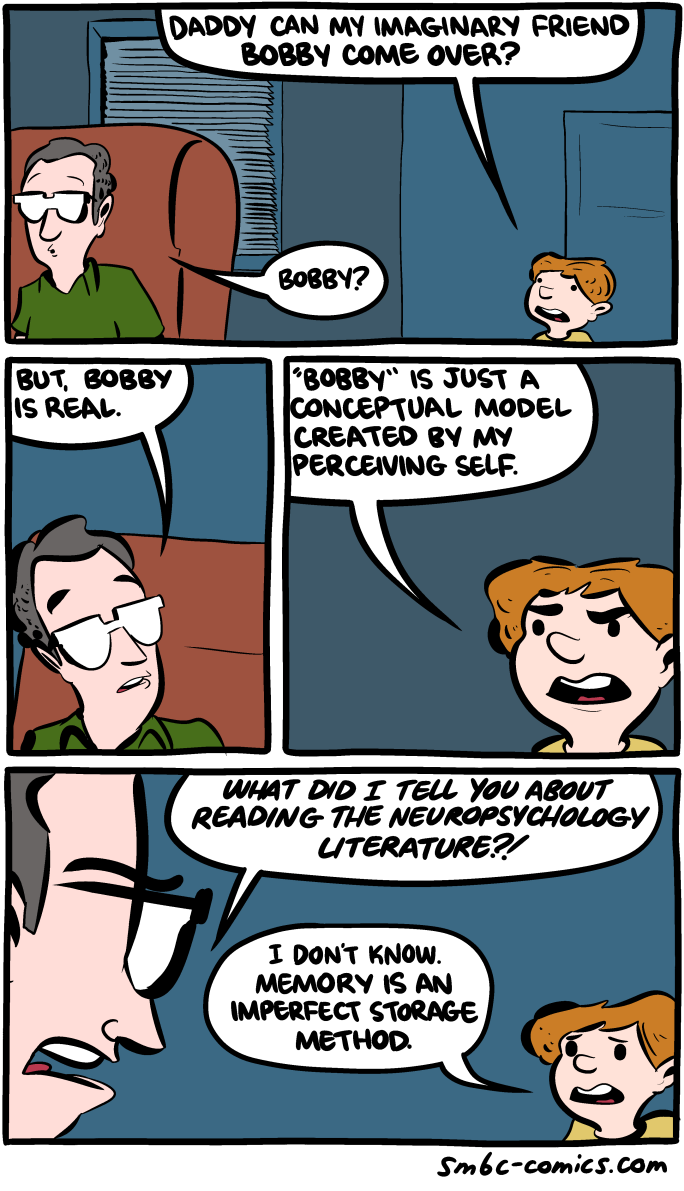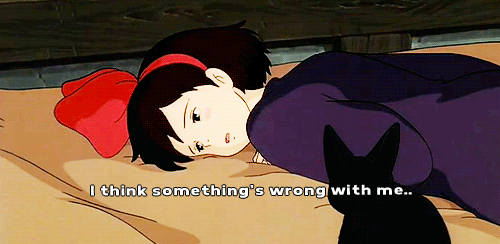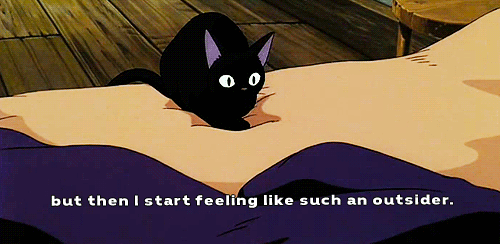At the beginning of the new millennium, I was writing content for a dodgy print-on-demand publisher in Manhattan’s Silicon Alley. In the first week of January, I received a call from Sophie Cottrell, who was then the publicity director of Pantheon, a venerable Random House imprint. Sophie had a debut author who’d written an epic literary novel, part of it created while living a fist-to-mouth decade in Paris. The novel was called House of Leaves and the author was Mark Z. Danielewski.
Sophie asked me if my website might want to do something that had never been done before: Did we want to do a complete online serialization of the 734-page House of Leaves before the publication date?
After our initial surprise, my company agreed. Using semi-primitive web technology, our coders in Nebraska spent hundreds of hours uploading seventy pages of House of Leaves every several days for a five-week period, up to the March 17, 2000 publication date. To prevent mass piracy, the book could only be downloaded one page at a time.
House of Leaves is a literary novel disguised as horror fiction, with an innocuous house in Virginia concealing a labyrinth that eventually consumes a film crew. Danielewski also takes the reader into the turbulent and violent life of Johnny Truant, a hero of the novel.
The online serialization caused a good media stir and some unsettling buzz in the publishing world. The difficult downloading process led to some comical moments. A book reviewer for Seattle’s alt weekly The Stranger read the whole book online and complained of blood on her keyboard.
Danielewski himself was a larger-than-life author, with high cheekbones, broad shoulders, and blue hair. Like a happy warrior, he dove into promotion. When attacked by participants in an online chat, he would give a full-throated laugh of appreciation.
After the serialization, Danielewski undertook a massive national book tour. He paired up with his rock-star sister Poe and toured with Depeche Mode, performing original House of Leaves music onstage from Poe’s album Haunted and doing spoken word from the novel. The book sold an incredible 200,000 copies in hardback.
Danielewski’s golden career continued. Only Revolutions, a fantastical history of the violence and triumph of America told in verse by two runaways driving down America’s highways in souped-up cars, was a finalist for the National Book Award in 2006. His short novel The Fifty-Year Sword hijacked the grisly campfire tale genre, putting a group of orphans in peril.
In his greatest gamble yet, Danielwski has just published The Familiar, Volume 1: One Rainy Day in May, which is the first installment of a projected twenty-seven-volume novel. At the center of the 850-page first volume is Xanther, a twelve-year-old middle school student going with her stepfather in a heavy rainstorm in Los Angeles to buy a dog. Xanther is epileptic and has been repeatedly bullied in the many schools she has attended.
Like short vignettes from a serial TV show, Danielewski cuts between about a dozen seemingly unrelated storylines: A ruthless tattooed gangbanger named Luther takes his crew on a violent mission. A police detective on the cusp of retirement named Ozgur visits several gruesome murder scenes. Cutting to Marfa, Texas, two elderly digital outlaws pursued by government agents try to protect “The Orb,” their eerie machine. An angry Armenian cab driver named Shnorhk experiences a miscarriage of justice in traffic court and then explores his people’s dark history.
Using the work of two extremely gifted artists and designers in the Atelier Z studio, the story in The Familiar and the design of the book are directly linked. A child’s deluge of questions becomes a storm of worlds that match the rainstorm outside the car window. In “The Orb” section, the type forms the shape of the mysterious machine. In a section set in Singapore, characters speak in pigeon English, with fragments of Russian and Chinese are mixed in. When Xanther runs through the rain to answer a cry for help, the words are stripped away down to the essentials, where the reader can feel Xanther’s drive, panic, and sense of purpose. The book is peppered with full-color plates of collages of letters, spacescapes, and a short graphic novel excerpt. Each section gets its own colored tab. Each storyline has its own font, for a total of 22 fonts in the book, from Baskerville to Minion.
In the storylines, Xanther’s rescue of a strange animal propels her to a new level of maturity. Luther commits his atrocious act. Ozgur visits a triple-murder scene. In the next volume, more will be revealed and developed, and more layers will be added.
I spoke with Danielewski by telephone to Los Angeles, where he lives, as the novelist prepared for the publication of The Familiar, Volume 1, and his short book tour. He spoke of why he needs to write twenty-six more volumes of his novel.
***
The Rumpus: When did the idea of a twenty-seven-volume novel come to you?
Mark Danielewski: The story that is focused on the cat, you could find old roots and examples in side projects, failed stories and things that persisted. I began working on it in full in 2005, after finishing up Only Revolutions. It’s been about nine years that I have been working on this. Only Revolutions begat its own form, the structure and the trip that Sam and Hailey were on. It was never clear until it was perfectly clear what the rules and dynamics at work were. That’s true of The Familiar. It began to create its own pacing.
Only Revolutions begat its own form, the structure and the trip that Sam and Hailey were on. It was never clear until it was perfectly clear what the rules and dynamics at work were. That’s true of The Familiar. It began to create its own pacing.
There is a lot of meditation on the media I am interested in. House of Leaves remediated film and Only Revolutions remediated music. The Fifty-Year Sword does campfire stories. Television series began to play a role. It wasn’t a magical insight. You and I watched this cultural presence emerge and become pervasive. People were saying, “We are watching novels for the first time in way that film could never do. Then you have examples like The Wire, where the pacing was about character. It wasn’t about tearing up stories. It wasn’t about creating an entire story in just one episode, which was the old mode for serial books. It may be a long-running detective series, but each book contained its own mystery and its own solution, and maybe there would be an overarching villain. Then The Wire came along and showed a different kind of pace. There was a combination of an appreciation for a series like The Wire or The Sopranos, or Battlestar Galactica. It influenced my view on how this whole thing would unfold. In that sense I became more and more committed, seeing what each character could do, and what that involved with the structure itself. I think I was toying with it, how it was going to work. I think the boldness was in allowing the characters to proceed within the story as they now proceed, as you have experienced them. Certainly, you could tell the whole story in ten pages. You could accelerate it. You could have one of those shows that rapidly eat up plot points. In the devouring, you eat up all the nutrients.
I definitely call The Familiar a novel. In about two weeks, I will only have twenty-five volumes left to write. It is a specific novel. It may end up being my life’s work. As much as it contains my work, it is dominated by the personalities in it.
Rumpus: The central story in this volume is the twelve-year-old Xanther’s trip to get a dog with her stepfather. How did you develop such a heartbreakingly vulnerable character?
Danielewski: I am definitely going to be thinking about how I came up with Xanther over a vast number of volumes. What is wonderful about this novel is that it necessitated me to get out and to talk with people who were in LA gangs and to talk with parents, friends of mine. I have four godchildren, all girls. I have watched them grow up, as they head to school. I have not only heard how they speak, I also hear immediately afterwards how their parents speak about them. There is this correlation between the vast complicated obstacles that some of these children are facing, but they are not all that apparent in the way they were speaking to me. It’s about tapping into the parts of the self.
Rumpus: In an interview long ago, you told how after your parents’ divorce, your mother moved you and your sister from New York to Utah. You had this grim story of your sister dressed in a jacket painted with a Who emblem on the back getting on a school bus full of jocks and prom queens. She was like chum being thrown to the sharks. Did your experiences with bullying and being an outsider shape Xanther’s story?
Danielewski: It all comes from personal experience, but is taken beyond the personal experience to the absolute strange. Those moments gave me keynotes into those experiences. Utah was a very strange place to be a straight white male, basically exorcising me from these social bubbles. I remember the belittling, the bullying, the challenges that it brought up, and the benefits, as well. That was there. It was amazing how vital it was. That’s a question that I don’t have an answer to yet, why those moments do have a certain intensity that can burn away the intervening decades.
I have been in the same relationship for four years. When you are suddenly in a relationship that is nurturing, it is nurturing to this fragile thing that is growing, like this book. It has the potential to grow into the most beautiful thing, but needs to be stewarded through the difficult parts. Those kind of instincts, I might have been closed off to in the past. At the end of Only Revolutions, Sam and Hailey are on a mountaintop, wanting to rain the apocalypse down on everyone. There is also a hint, though, of wanting to return to a spring. I found that spring. There were some rough intervening years for me, but by coming to this place that is fragile, unexpected and open, by being willing to nurture it, this book has been made possible.
The thing about this book is the time that it is going to take to write and that no one’s time of Earth is guaranteed. It may never be more than what you’ve read so far or a little bit further. The book must continue to be fragile for years and years as it grows into being. That’s a terrifying feeling, but the only way to get through that terror is to embrace it and love it in its moment. To try to leap to the end would be to induce a phantamagoric panic that will make writing impossible.
Rumpus: Do you think writing a twenty-seven-volume novel is a dangerous career move?
Danielewski: Sure.
Rumpus: What happens if it doesn’t sell?
Danielewski: If it doesn’t sell, then it dies. This is one of those things that depends on the reader. As much as Michiko Clark [Pantheon’s publicity director] supports me, and as much as I love the people at Pantheon, this requires readers. It is too expensive to finance and takes too many human hours, if the readers don’t show up. By the time we get to Volumes 3 and 4, and there are only a few thousand readers, then it won’t continue. Like Xanther has this cat in her hands at the end of the book, the book is like the cat in people’s hands. Care, trust, love, and a protective spirit is offered. In that sense, I am terrified but also liberated.
I’ve always said that the book would be an open experience. There would be an element of the providential. Even the people in the Atelier Z are providential to a certain degree. I was desperate for an artist. Suddenly someone at a dinner party mentions that they know someone, then the next thing is that someone new is working at the Atelier. The book depends on others, where Only Revolutions didn’t. House of Leaves didn’t. House of Leaves was that self-born Paradise Lost, Satan on the side of the lake, “I will make a heaven out of hell.” This book does require others.
Rumpus. Did Atelier Z exist during The Fifty-Year Sword?
Danielewski: Yes. You could read that book in about an hour.
Rumpus: You’ve really upped your game with design on the new book.
Danielewski: I can’t disagree with you. I’m quite astonished by it.
Rumpus: Xanther has what appears to be an epileptic fit towards the end. The reader follows her as the text speeds up and rips through the pages. How does design integrate with the text?
Danielewski: It’s a big question. Particular to Xanther, over the nine years, the design changed. I was trying to settle on what would be right. The name and the look of the font is important. These changes are constantly going on. I am designing the text as I am writing. It is not like you write the text, then design it. They go hand in hand. When these moments accelerate, there is less text on the page. The meanings have to be more concentrated. You can be more verb heavy in terms of action, or you can be more poetic. There are times when I changed the font and that radically affected the number of words on the page, and that changed everything and suddenly her voice changed. There is a lot of that. She hears this cat through the three pink ellipses. One of the parts that always gets me about Xanther is the thought of writing twenty-seven volumes with her at the center is that this is the greatest privilege that I can imagine. I will be so lucky if I get to do this. All the characters in the book hear the cat, but she’s the one that answers and leaps from the car, and she goes to get it. All of the other characters are chosen, but she’s the one that answers. That’s the heart of the book for the writer and the reader. Do you answer the call?
Rumpus: In multiple books, you seem to have a keen interest in children in peril. There is the horribly abused Johnny Truant in House of Leaves, and the orphans endangered by the storyteller in The Fifty-Year Sword. Now, there is Xanther, who has a bleak future ahead. Do you see a trend in your writing?
and the orphans endangered by the storyteller in The Fifty-Year Sword. Now, there is Xanther, who has a bleak future ahead. Do you see a trend in your writing?
Danielewski: Sure. It’s a point, a nexus, where the literal and historic, prophetic and prescriptive and the symbolic combine. Yes, we are talking about a child, but we have these young ideas at all ages, that if nurtured and cared for, can go up to bigger and better things. They may be as significant as a little impulse that a fifty-year-old woman has been holding on to, that she can nurture, and suddenly become this little gleam ten years later, and change her life in a way that is inspiring for everyone. Through a lot of practice of my own, whether it is physical practice like tai chi or yoga, it is this constant place of finding newness and beginnerness. A child is emblematic of that. It is a time when we are formed by powerful ideas and may be prejudiced by these ideas. From an early age, we are prejudicially slotted to a certain viewpoint. We always have an opportunity to engender a different viewpoint, yet it is very easy not to. It is this point when habits that start to reinforce bad things as well as good things have not quite formed or set, and there is an openness. There is such a vitality. At the same time, there is an age in The Familiar… it is very difficult for me to see the book as you see the book, for so much more of it is in place in my head, which I know is not in Volume I.
Rumpus: In terms of your working style, do you already know what happens in V. 22 and V. 27?
Danielewski: Yes. I absolutely know the ending and I am confident that the ending will be entirely different by the time that I get there. It is in place. There are stories that will be developed in much greater detail, like [the Armenian cab driver] Shnorhk and the [hardboiled LAPD detective] Ozgur, so there is this element of age, of older characters, as well, and to their own awakening and changing. Ozgur is coming around… he has a lot of balls in the air.
Rumpus: Each chapter had its own ember of violence, from Luther the gangbanger to Ozgur’s grisly murder scenes, to Xanther’s violent abrupt and dangerous epileptic fits. Did you intend this much violence or did it just happen?
Danielewski: The whole book did happen in one way, the moment of just writing it from nowhere. Then the book didn’t just happen, because there was a revisiting of the different sections. Your concern about the violence is right. There is a fear of violence, there is some experience with violence, the inherited stories of violence in my father having survived World War II. There is the maddening energy of violence. It’s a good point. There is violence and more violence coming.
Violence is a compressed moment that is shocking and abrupt and out of the ordinary in its comprehension, even though it speaks to something inevitable. That’s part of the literary argument, the compression of things, what is always so bewildering about time’s passage, about violence where time is accelerated, that it goes beyond our control.
Rumpus: Did you do extensive research to create Luther and his crew?
Danielewski: A lot of it is providential introductions to people. I’ve ended that cloistered, monastic part of my life as a writer, and I want to be much more open to the variables of change, and that took a lot more doing. I had to change aspects of my personality, further amplified by the examples of Salinger and Pynchon. Suddenly I said, “Let’s open the doors, let’s open the windows here.”  That began to take place with The Fifty-Year Sword. I depended on other people and that led to introductions. It required personal openness that was very hard for me. I could be at a barbecue and start talking to someone. For some reason, this guy opened up to me about life in “La Pinta” [the LA Mexican gangs] and in jail. That led into Luther’s world. A lot of the taxi cab drivers in LA are Armenian. Suddenly, I was talking to them and having great conversations. You have this horrendous English, but through it you get these tremendous stories of the Armenian genocide, which was being echoed now. It is also about not getting confused by the small things, but focusing on the larger issues, the blunt subject of each chapter.
That began to take place with The Fifty-Year Sword. I depended on other people and that led to introductions. It required personal openness that was very hard for me. I could be at a barbecue and start talking to someone. For some reason, this guy opened up to me about life in “La Pinta” [the LA Mexican gangs] and in jail. That led into Luther’s world. A lot of the taxi cab drivers in LA are Armenian. Suddenly, I was talking to them and having great conversations. You have this horrendous English, but through it you get these tremendous stories of the Armenian genocide, which was being echoed now. It is also about not getting confused by the small things, but focusing on the larger issues, the blunt subject of each chapter.
Rumpus: Some story threads in The Familiar V. 1 end abruptly. I thought they may be red herrings and dead ends. With twenty-six volumes to go, do you anticipate developing the shorter stories like the cancer-ridden cowboy or the elderly fugitive couple in Marfa, Texas, traveling with a mysterious machine called “The Orb” ?
Danielewski: Yep. The other thing is being open… I can anticipate this happening that for the first time, there will be reader feedback. As readers are drawn in and become more curious about things, these things may become amplified by the suggestions that may come. It will be much more open, but there will be times when I say, “That’s not going to happen.” There is something else that can happen, the introduction of ideas. One person who was helping me with the Armenian section opened up with a series of stories that she didn’t even think were germane to the book. They introduced me to a different set of literatures, which will influence what Shnorhk is dealing with in the novel.
Rumpus: Was it difficult to write the terrifying scene where Xanther bursts out of her stepfather’s car, into a blinding rainstorm?
Danielewski: It was. In some ways, it is the heart of the book. It was the heart of the last nine years of writing. It was the inevitable part that she was going to find something. The incredible velocity when you are finding something or losing something, the sense of elation that gives you purpose, that can drive Xanther through her run. I wonder if what readers are responding to, which is in the book, is the sense of loss that the parents feel they are losing her. They also understand that she is changing, that she is growing up, that there is an underlying tension that their daughter is starting to become who she is in a way they can’t control. This moment is literalized. Anwar experiences not only losing her, but for a moment is unaware of her leaving the car, because he is focused on the rain, the traffic and where they are going. Xanther is not losing Anwar. There is no point where she is thinking of him. Xanther is thinking of the purpose that she can hold on to through everything that will come at her. She’s just ahead of everything that will ask of her to fail. There is the reprieve that she grants to something that is voiceless and unknown. It is very moving. I feel those seizures of information that Xanther has. For me, it is the most effective part of the book. I am gratified by the early response of readers. I was moved writing it.
In this scene, Xanther is not prey to the usual television adversaries. It’s the rain, it’s the distance. It’s the peculiar calling of an unspecified thing that alters the relationship. It has a profound effect on the family in later volumes.
Rumpus: It’s been fifteen years since House of Leaves. For that book you toured extensively through bookstores throughout the country, as well as doing a tour with Depeche Mode and your sister Poe, where you performed onstage. For this book, you are doing a Middle American tour of four cities—Athens, Georgia; Tulsa, Oklahoma; Fort Collins, Colorado, and Portland, Oregon. Why this change of pace?
Danielewski: It is what I want to do. It is the book, like the cat, like Xanther, will survive because of Xanther, the book and the cat. There is not the time to do that extensive tour. It’s about pacing. Talking with my publisher, if we are publishing two or three volumes a year, I don’t have the time to take a month off to tour for each volume. It’s impossible. We settled on one week of touring. We are doing a limited amount of press, six to nine interviews. The idea is not to repeat the same cities. Over twenty-seven volumes, it may end up being the most expansive touring I have ever done, since touring with Depeche Mode and my sister.
We are not going to do New York and LA every single time. Spread it out… a few big cities and a few small cities. If the book does well, it will be more of a big event for the New York bookstores in later volumes. They are going to get a lot more people, which is always better for their business. It will be more of a good time. Ultimately, I want everyone to have a good time.
We did so many cities for House of Leaves, with Depeche Mode, then the Borders Bookstore tour. Then there were tours that Sophie [Cottrell, his old publicist] kept adding. You almost become an act.
The Familiar says everything. It took nine years to write and it probably takes about ten to twelve hours to read. It probably took you twice as long to read the first half of the book as it took you to read the second half. That’s part of the impact of the scene with Xanther in the rain—you know it’s going to speed things up.  It’s craft. It’s plotted like her thinking. You’ve learned how to read her. You’ve been taught how to read her with the rising rainstorms, and finally she has the moment when she frees herself from that.
It’s craft. It’s plotted like her thinking. You’ve learned how to read her. You’ve been taught how to read her with the rising rainstorms, and finally she has the moment when she frees herself from that.
Rumpus: Fifteen years ago, on your extensive book tour, you made a point if inscribing artwork in the audience members’ books, and then stayed out late drinking beer with the bookstore staff. Did this help sell books?
Danielewski: I would interact with both the audience and the staff. That was taught to me by Sophie Cottrell. I read at Elliot Bay Book Company in Seattle and only four people showed up, and two of them were homeless. One of the people walked out during the reading and it wasn’t a homeless person. Sophie told me I was selling a lot of books. I had hung out with all the booksellers, who I loved, and they were selling my books over the week.
Rumpus: Why does every appearance of the word “familiar” show up in the color pink?
Danielewski: That is one question that I am just not going to answer. That’s like asking why “house” in House of Leaves always shows up in blue. The reasoning behind this is all rather extensive. I defer to the moment ahead where you have your “A-ha” moment.
Rumpus: Xanther’s natural father is Dov, a soldier who died a heroic death in Afghanistan. What interested you in giving Xanther a ghost father?
Danielewski: Good question. Lots of reasons, but that is in the category of “Why pink for ‘familiar’?” You are landing on important things.
Rumpus: Why do you frame most of the action in the book as literally taking place during a torrential rainstorm in that drought-stricken city of Los Angeles?
Danielewski: Part of it’s true. We are in the middle of a drought and suddenly the rain just drops from the sky. It feels like there is enough water forever, but there isn’t. The streets are like rivers. You see garbage cans swept away. The book is a love song to Los Angeles, way beyond what people associate with Los Angeles, its media persona.
As you work the material, it begins to give suddenly. “What’s a rainstorm?” There are cinematic instincts. You are looking at Xanther’s seizures and you can take it so far with the language that Xanther incorporates. Ultimately, for Xanther, the rainstorm moves into a visual representation of the sudden crash of many thoughts.
There was this moment in writing when I realized that every character was in the rain. If Kubrick was the patron saint of House of Leaves, Akira Kurasawa was sort of the patron saint of The Familiar.
***
Drawing © Mark Danielewski.
 Important news to start your day:
Important news to start your day: 






















!["Friendship's Token" (New York: Leavitt & Allen, [n.d.]) (via Library Company Conservation Dept.)](http://hyperallergic.com/wp-content/uploads/2015/02/motherofpearlbook7.jpg)
!["The Emblem: A Gift for All Seasons" (New York: Leavitt & Allen, [n.d.]) (via Library Company Conservation Dept.)](http://hyperallergic.com/wp-content/uploads/2015/02/motherofpearlbook9.jpg)



















 Apple, Google and other major tech companies have urged President Obama not to give the FBI backdoor access to smartphone data, according to the Washington Post. The publication obtained a letter signed by no less than 140 major tech players, securit...
Apple, Google and other major tech companies have urged President Obama not to give the FBI backdoor access to smartphone data, according to the Washington Post. The publication obtained a letter signed by no less than 140 major tech players, securit...


























